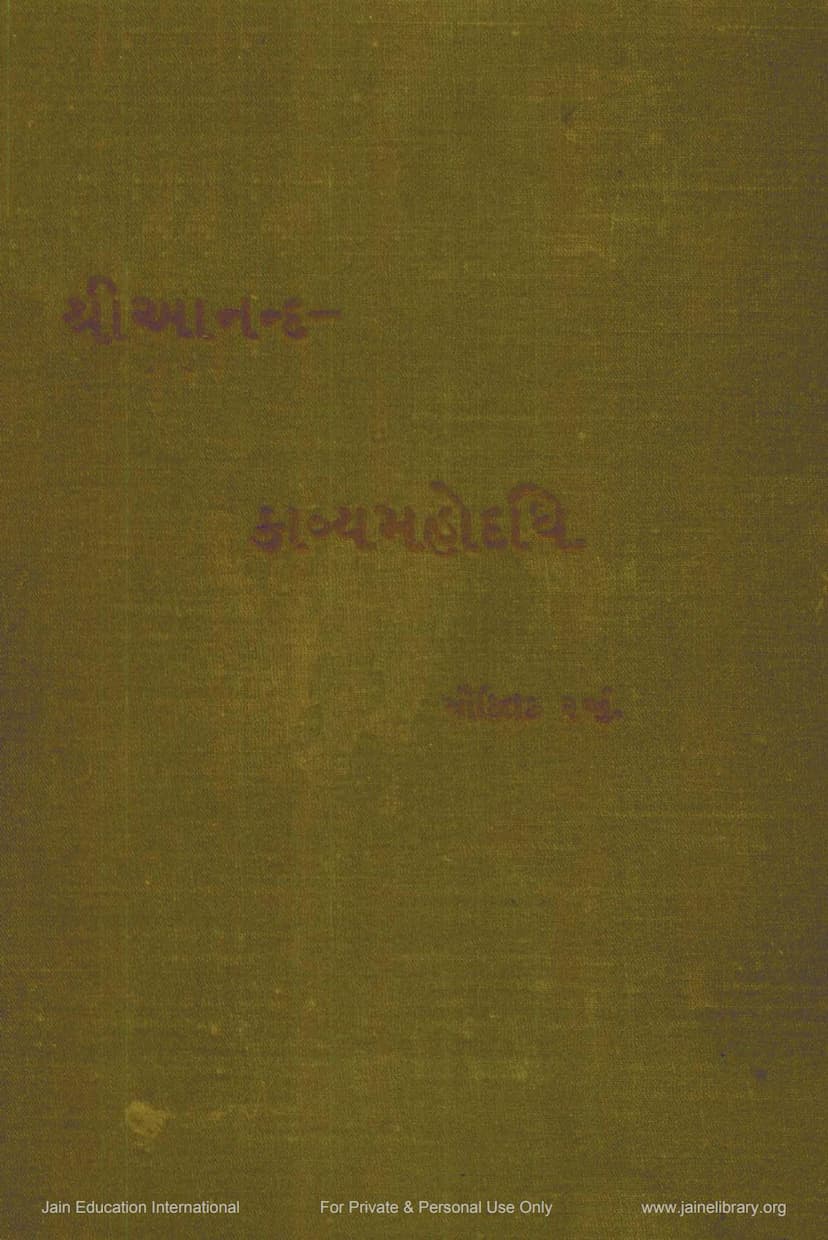Anand Kavya Mahodadhi Part 2
Added to library: September 1, 2025

Summary
This document is the second part of the "Anand Kavya Mahodadhi" (Ocean of Joyful Poetry) series, compiled and edited by Jivanchand Sakerchand Javeri. Published by the Devchand Lalbhai Jain Pustakoddhar Fund in 1914, it is part of a larger effort to preserve and disseminate ancient Jain literature. This volume specifically contains "Shri Ram Yash Rasayan Ras," a poetic retelling of the Ramayana, composed by Muni Keshraj.
The book is dedicated to Panyas Shri Siddhivijaygani, acknowledging his significant contribution and support to the fund. The editor expresses his gratitude to various individuals and institutions for their help in collecting and publishing these old Gujarati poems.
The publication aims to make ancient, often unpublished Jain works accessible to the public. It highlights the importance of Jain literature, not just for its religious and philosophical content, but also for its contribution to Gujarati language and literature. The editor calls for the submission of other ancient Jain texts for publication.
The introductory sections delve into the history and significance of Jain literature, its relationship with other Indian religious traditions, and the evolution of the Gujarati language within Jain writings. It also touches upon the legacy of Sheth Devchand Lalbhai Javeri, the founder of the fund, and his family's commitment to promoting Jain knowledge.
A substantial portion of the book is dedicated to the "Shri Ram Yash Rasayan Ras" itself. It provides details about the author, Muni Keshraj, and his sect (Vijaygach). The text then presents the poem in its entirety, divided into various chapters and poetic meters. The poem recounts the epic story of Rama, Sita, Lakshman, Ravana, and other key characters, interspersed with moral teachings and descriptions of various events. The editor's notes and extensive footnotes offer critical commentary, linguistic explanations, and historical context, making the ancient text accessible to modern readers.
The latter part of the book includes reviews and endorsements from prominent figures in Gujarati literature and scholarship, such as Keshavlal Harshadray Dhruv, Hargovind Dwarkadas Kantawala, and Narsinhrav Bholanath Divetia. These reviews praise the collection's value for linguistic and literary studies, as well as its role in making ancient Jain poetry accessible. They also highlight the meticulous work done by the editor and the generosity of the publishing fund.
The text also includes a detailed analysis of the "Ram Rasayan Ras," discussing its historical context, the author Muni Keshraj, and the philosophical underpinnings of Jain teachings presented within the narrative. A significant portion is dedicated to addressing controversies and debates, particularly concerning the interpretations and modifications made by different Jain sects to the text, specifically highlighting the differences between the Murtipujak and Sthanakvasi traditions. The editor's meticulous comparison of different manuscript versions and printed editions underscores the commitment to accuracy and completeness.
Overall, the book serves as a valuable repository of ancient Jain poetry, offering a glimpse into the literary and religious landscape of Gujarat during the time of its composition. It is a testament to the effort undertaken by the Devchand Lalbhai Jain Pustakoddhar Fund to preserve and promote valuable Jain literary heritage.